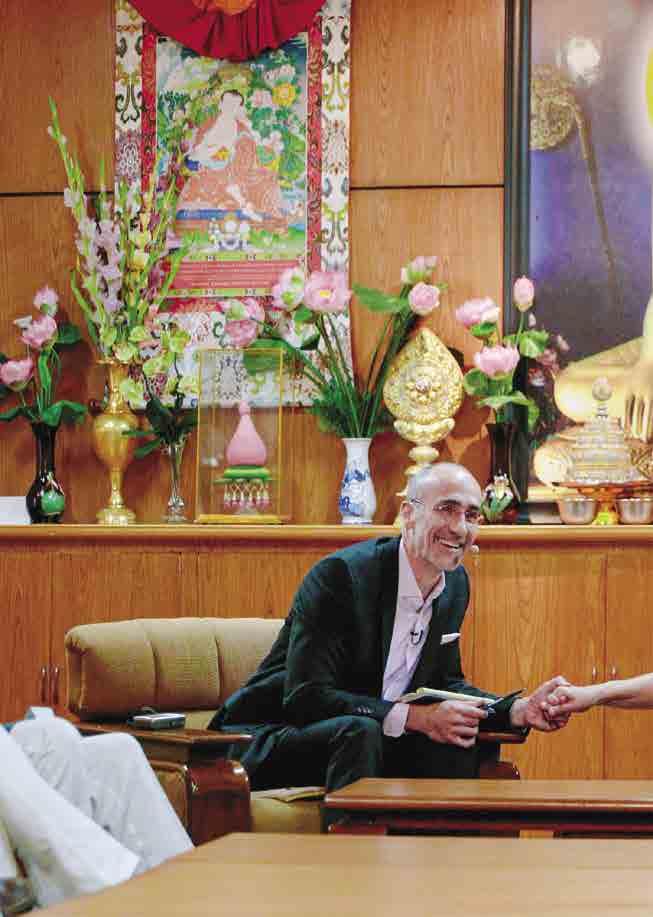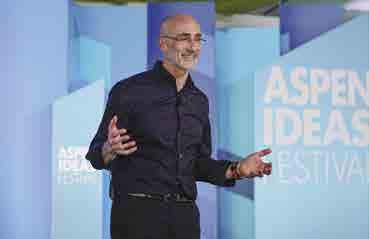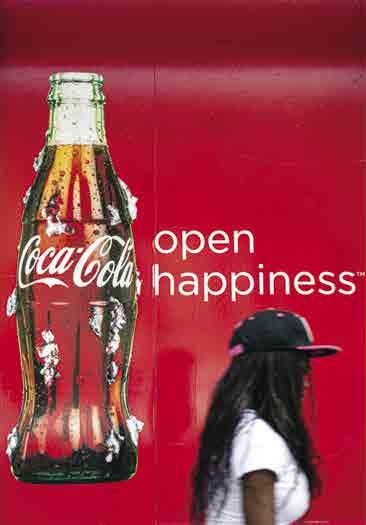
16 minute read
The Formula of Happiness
The Formula of Happiness
I am a professor at a prominent business school — an institution that trains many of the world’s most-influential business leaders, including some at Generali. You might assume that I teach a subject in the conventional business toolkit like marketing, finance, strategy, or accounting.
Advertisement
I don’t teach any of these things, however. Rather, I teach happiness. To be more specific, I teach a course called "Leadership and Happiness. "
BY ARTHUR C. BROOKS — PROFESSOR, HARVARD UNIVERSITY (PhD)
Happiness might seem like a strange subject—one that, based on a subjective feeling, could hardly be the basis for a science class, let alone business education. It turns out, however, that not only is happiness a growing scientific discipline, understanding it is becoming a core competency for anyone who seeks to lead others to higher levels of well-being, productivity, and success. This is true in all areas of business, but especially in client-facing businesses in which customers interface with a company during moments of uncertainty and discomfort. The science of happiness reveals strategies to manage these types of businesses more effectively, and to turn challenges into opportunities. It shows how people working in these businesses can meet the difficulties and of uncertainties their customers experience in their lives with confidence. A perfect example of this type of industry is insurance. Armed with some basic knowledge of the subject I teach, I believe that professionals in this industry can be a powerful force for greater happiness in our society, and thus become happier and more competent in their own lives and careers.
A BRIEF PRIMER ON THE SCIENCE OF HAPPINESS
Over the last thirty years, research and innovation in the happiness field has exploded, especially in the United States. Stemming from the work of early pioneers such as psychologist Professor Martin Seligman at the University of Pennsylvania and Professor Mihaly Csikszentmihalyi at Claremont Graduate University in California, the science of happiness has taken root in research efforts and academic communities worldwide. Scholarly journals such as the Journal of Happiness Studies have provided an outlet for happiness researchers, and now generate more than 14,000 peer-reviewed papers per year. Academic programs and degrees based on the science of human happiness have proliferated at universities like my own. Data collection efforts combined with sophisticated analysis have proofed the idea of happiness as an observable economic indicator with policy significance for nations and economies worldwide. Meanwhile, the science has migrated into clinical practice, providing accessible tools based in research. As a result, the idea of studying happiness has begun to reach popular audiences and become a major focus of individual selfimprovement and wellbeing.
There is one major area that the science of happiness has yet to penetrate thoroughly: business leadership. Many corporate executives are aware of the science and find it personally interesting, but until recently there were few formal efforts to mold the work to their specific needs. This is the genesis of my own research and classes. In order to understand an individual’s penchant for happiness in a moment in time, scientists have attributed an individual’s natural baseline of happiness to three factors: past inheritance (nurture and nature), present circumstances, and personal habits. Approximately 50 percent of one’s natural baseline level of happiness is inherited.By studying identical twins separated at birth and raised in separate homes, social scientists could quantify the influence of differing environments on self-evaluated well-being. A combination of circumstances and habits explains the remaining 50 percent natural baseline of happiness. Scholars disagree on the contributing percentages of each. Circumstances—the good and the bad entering all of our lives—contribute as little as 10 percent or as much as 40 percent of subjective well-being at any given time. This is a substantial margin, but the effects of circumstances tend to be short-lived and are largely out of one’s control.
Personal habits contribute to the remaining 10-40 percent of our wellbeing. There is an enormous amount of research into the habits of happy people, which can be grouped into four basic categories: (1) faith or secular life philosophy, (2) family, (3) community and friends, and (4) meaningful work. The first three are fairly self-explanatory. The last category, meaningful work, needs defining; it specifically identifies work in which one has a sense of earned success and service to others. It does not specificy any type of job or income level. Work becomes meaningful when we work where our skills meet our passions, and we feel rewarded for a job well done. You can think of faith, family, friends, and meaningful work as the dishes in the meal that nourishes happiness. Pushing the metaphor a bit further, we can also identify the “junk foods” that we erroneously consume instead of these dishes, thinking incorrectly that they will satisfy our desire for happiness. Money, power, pleasure, and fame —four rewards valorized by the world we naturally pursue for evolutionary reasons but research shows do not lead to lasting well-being or satisfaction. In teaching pre-service and midcareer business executives, I begin by defining happiness. Many students are under the impression that it is a feeling. In truth, feelings are largely derivative of happiness, which should be understood as a multidimensional phenomenon. A good analogy is that of a meal, which if nutritious, is balanced across three macronutrients: protein, carbohydrates, and fat. Similarly, happiness is a combination of three phenomena, which we need in both abundance and balance: enjoyment, satisfaction, and meaning.
The subject of satisfaction—the second macronutrient—is an especially important area of study for happiness scholars, because it is so elusive. As the singer Mick Jagger famously sang, “I can’t get no satisfaction.” In truth, the science shows that satisfaction is the mental reward we get for accomplishing a goal. The problem is, we can get it but we just can’t keep it. This is what is referred to as the “hedonic treadmill”—the tendency to chase fleeting rewards that vanish as soon as we grasp them. Think of the happiness from your last pay raise, which you yearned for for months, but which you only truly relished for a few days. The solution to the satisfaction problem comes by seeing satisfaction as follows:
Satisfaction = What you have ÷ What you want
Your satisfaction is what you have, divided by what you want. All of your evolutionary and biological imperatives focus us on the numerator— the haves. If you find you are unsatisfied in life, that’s what you most likely have been doing all these years. But your natural imperative tends to ignore the denominator of the equation—the wants. As you increase your haves without managing your wants, your wants will proliferate and sprawl. You can easily be less and less satisfied as you move up the success ladder, because your wants will always outsize your haves. And when they do, your sense of satisfaction will fall. Or, as His Holiness the Dalai Lama put is, “We need to learn how to want what we have not to have what we want in order to get steady and stable happiness.”

Arthur C. Brooks speaker at the Aspen Ideas Festival.
One difficulty people face in achieving higher levels of well-being comes from confusion not about happiness, but unhappiness. A common assumption is that happiness and unhappiness are opposites, like light and darkness. They are not, insofar as they are experienced and processed by the brain. In fact, research shows that happiness and unhappiness are processed in different regions of the brain and that there is no incompatibility between high levels of both positive and negative emotions in individuals. Given this reality, a normal error many people make is assuming that greater happiness will come if they lower the sources of unhappiness in their life. For example, many people complain about a long commute to work, which research shows leads to a lot of unhappiness. Shortening the long commute might be a good goal, but happiness will not rise as a result, because a shorter commute will not raise any of the fundamental “macronutrients” in the happiness formula.
PUTTING THE SCIENCE INTO ACTION
In his 1851 work American Notebooks, the great American writer Nathaniel Hawthorne wrote, “Happiness in this world, when it comes, comes incidentally. Make it the object of pursuit, and it leads us a wild-goose chase, and is never attained.” This is basically a restatement of the Stoic philosophers’ “paradox of happiness”: to attain happiness, we must not try to attain it. Hawthorne was a wonderful writer, but he was wrong about happiness. The truth is that each of us can work to attain it with some amount of success; further, we can deliver it to others as well. The key here is the verb “work". Wishing to be happier, which everyone does, brings no results on its own. Think of your friend who complains about her job every day but never tries to find a new one. No doubt she wishes she were happier—but for whatever reason, she doesn’t do the work to improve her circumstances. This is not evidence that she can’t become happier. In truth, happiness requires effort, not just desire. Focusing on your dissatisfaction and wishing things were different in your life is a recipe for unhappiness.
The key is to take action to put yourself on a better path. Make an effort to understand human happiness, formulate a plan to apply what you learn to your life, execute on that plan, and share what you learn with others. If you do this, happiness will almost surely follow. The way to achieve greater happiness is, in summary: understand, practice, share. This formula is especially useful to leaders in business because they are accustomed to solving problems analytically, putting solutions into action in practical ways, and leading others to practice these solutions. For business leaders, happiness is very much like any other business problem: it should be understood through careful analysis, translated into solutions that can be executed, and spread to those the executive is leading. Why should the business leader focus on happiness? As Albert Schweitzer wrote, “Success is not the key to happiness. Happiness is the key to success.” This is not just wishful thinking; social scientists have shown that it is true: when people are happier in their work, they are more productive and successful in their tasks. First, leaders should understand the science of happiness by staying abreast of the basic research, which is easy and simple to do given the growing number of resources that seek to share the science with practitioners. These include online courses at the University of Pennsylvania, Yale University, and a version of my own course at Harvard University, all of which are designed for non-academics. Second, executives should commit to putting the ideas into practice. Most of the applied literature on happiness suggests very specific practices, such as creating gratitude lists, engaging in meditation, and structured journaling. These practices are based in research and can be extremely effective in raising well-being in the short and long run. The benefits for leaders—who are themselves, of course, their own “biggest HR issue”— can’t be overestimated. In my work with corporate executives,
I have seen happiness exercises lower stress, prevent burnout, raise enjoyment, and improve relationships. The final step in the process is to teach happiness to others. Executives don’t often think of themselves as teachers, but they should. Great business leaders and master teachers share the ability to help and inspire others through ideas and new skills; the least-effective leaders are micromanagers who prefer to do everything themselves. Given the clear link between happiness and success, one of the most important functions for a business leader is to teach happiness to those he or she leads by personal example, explicit instruction, and by creating a workplace that creates an environment of well-being—which once again, the leader learns about from the abundant resources now available.
THE SPECIAL ROLE OF INSURANCE
All leaders have the opportunity to share the principles of happiness via the people they lead. However, leaders in the insurance industry have a particular advantage in doing so. To begin, plenty of evidence shows that insurance raises happiness for consumers. According to research conducted by the U.S. Centers for Disease Control, people who buy health insurance are 16 percent more likely to report being very satisfied with their lives than those without health insurance. On the flip side, economist David Blanchflower finds that not being able to see a physician—the result of lacking insurance in the United States—has roughly the same negative impact on one’s sense of wellbeing as being unemployed for 12 months or having a disability. By proxy, insurance agents become the human purveyor of happiness in times of distress. One only has to look at the 2021 images of the great German floods, in which insurance adjusters were some of the earliest people on the scenes of destruction. People who had lost their homes were visibly delighted—probably for the first time since the disaster occurred—as these professionals assured them that they had not lost everything. The relationship between happiness and insurance is summarized by the French philosopher François Ewald: “Insurance liberates man from fear.” Fear is a major cause of unhappiness, and barrier to happiness. Some fears are persistent and chronic like becoming ill, impoverished, or dying without leaving one’s family with adequate resources. Fear is necessary to survival of course, but living with a chronic state of fear can ruin life satisfaction.
The fear of unknown outcomes is, to be precise, one of uncertainty—the confrontation with unknowable outcomes, and thus, inestimable probabilities and unmanageable contingencies. People in perfect health literally lay awake at night wondering what tragedy might befall them and their families, if they have no way of understanding the likelihoods or a way to insure again the most catastrophic scenarios.

The undoubted king of advertising campaigns in 2014 belonged to the multinational that has always led the field in terms of advertising: The Coca Cola Corporation. The concept at its heart was as clear as it was simple: associating the historic brand with the immediate ideal of happiness.
ALAMY / MIGSTOCK
Uncertainty has been studied in a laboratory setting in which scientists have measured the physiological responses in the body following uncertain shocks. The researchers found that stress levels are highest when a person’s ability to predict the outcome is lowest. Psychologists at the University College London who studied pathologically anxious individuals using gambling experiments also discovered that individuals are less risk averse when losses are more clearly understood. What all of this shows is that uncertainty—not the existence of bad things, but simply not being able to predict them or insure against them—is what brings the most unhappiness. We can all relate to this, I believe. My father, a notorious worrier, went so far as to earn a PhD in biostatistics in order to resolve some of the uncertainty in his life. Obviously, this is where insurance steps in to make life much better. It does so by converting uncertainty to risk. Perhaps the distinction between uncertainty and risk sounds trivial, but it is not. Risk involves known possible outcomes, estimated probabilities, and thus, an ability to insure against the worst scenarios. Risk, while not welcome, alleviates the terror of the unknown from uncertainty. This is why politicians always offer social insurance to citizens: to alleviate fear, which is a barrier to human happiness.
The insurance industry alleviates uncertainty at the private enterprise level, and as such, is a unique engine of wellbeing in the modern economy. Indeed, as an economist, when people ask what industry brings the most happiness to the most people, I don’t list entertainment or tourism; I say it is insurance. Insurance professionals can use this information in several ways. To begin with, agents should never see their product as “necessary but boring,” like Brussel sprouts or sensible shoes. On the contrary, insurance agents should take great joy in providing a unique benefit to their client: one of the most cost-effective means ever designed to clear away a barrier to happiness. Remember, one of the “dishes” in the meal of happiness is meaningful work, central to which is serving others. Agents can look forward to each day with the full assurance that they are doing exactly that. As happiness brings success, this attitude can start a positive spiral of job performance.

A model uses her mobile as she waits for a show beginning backstage at Tbilisi Fashion Week. In late 2019, Instagram made a change to its platform, removing the number of likes on published content from public display. This was designed to improve the user experience and to tackle the reported mental health impact associated with social media, such as stress and depression, especially on young people.
REUTERS / DAVID MDZINARISHVILI
Second, insurance executives should communicate with their employees and the public from the frame, “We sell happiness.” Perhaps it sounds implausible, even laughable. But it should not because the claim is based on solid social science and everyday experience. This is a way to recruit talented, publiclyminded young people into the industry. It can raise employee morale in a business that can at times be hectic and difficult. It can improve relationships for leaders to remind employees that internal problems get in the way of delivering a crucial service. It can enhance shareholder value by expanding markets. This is a classic “win-win” in which business prospers as it improves people’s lives.
I strongly suspect that very few readers of this essay entered the insurance industry early in life with the express intent to bring greater happiness to others. Of course, we all want to do so, but most of us choose a profession for far more practical, earth-bound reasons. As we age, however, most people seek to find meaning in their work. For some, this is a struggle. As a happiness specialist, I often meet professionally-successful people who confess that they believe they made the wrong choice; that their chosen vocation does not provide the satisfaction that comes from serving others in a tangible way. Insurance professionals are in an enviable position in this regard. As they progress throughout their careers, they do not face a natural tradeoff between success and human impact. The key is to remember that while the product may be insurance, the impact of the product— happiness—is something much greater in the lives of customers, employees, and themselves.

Arthur C. Brooks is a former president of the American Enterprise Institute (AEI). He concurrently serves as a professor of the practice of public leadership at the Harvard Kennedy School and a senior fellow at Harvard Business School. He was president of AEI from January 1, 2009, to June 30, 2019. Before joining AEI, Dr. Brooks was the Louis A. Bantle Professor of Business and Government in the Maxwell School of Citizenship and Public Affairs at Syracuse University, where he taught economics and social entrepreneurship. Before his work in academia and public policy, he spent 12 years as a classical musician in the United States and Spain. Dr. Brooks is a columnist for The Washington Post, host of the podcast “The Arthur Brooks Show,” and the bestselling author of 11 books on topics including the role of government, fairness, economic opportunity, happiness, and the morality of free enterprise. His textbook “Social Entrepreneurship” was published by Prentice Hall in 2008. Dr. Brooks’ latest book, “Love Your Enemies” (Broadside Books), and a feature-length documentary, “The Pursuit,” were both released in spring 2019. He has also been published in dozens of academic journals. Dr. Brooks has a PhD and an MPhil in policy analysis from the Pardee RAND Graduate School. He also holds an MA in economics from Florida Atlantic University and a BA in economics from Thomas Edison State College.










